Top 15 Deadliest Martial Arts in the World
Table of Contents:
- Introduction
- The Evolution of Martial Arts
- Criteria for Deadliest Martial Arts
- Top 15 Deadliest Martial Arts
- 4.1 Kung Fu
- 4.2 Karate
- 4.3 Traditional Taekwondo
- 4.4 Brazilian Jiu-Jitsu
- 4.5 Sambo
- 4.6 MCMAP (Marine Corps Martial Arts Program)
- 4.7 Muay Thai (Thai Boxing)
- 4.8 Silat
- 4.9 Eskrima
- 4.10 Bacom
- 4.11 Rough and Tumble
- 4.12 Vale Tudo
- 4.13 Ninjutsu
- 4.14 Line (combat system)
- 4.15 Krav Maga RED
- The Future of Deadly Martial Arts
- Conclusion
Introduction
Martial arts have transcended mere combat techniques, evolving into comprehensive systems that encompass physical, mental, and even spiritual development. They are a reflection of human ingenuity and resilience, shaped by centuries of cultural exchange, innovation, and adaptation. From the disciplined strikes of karate to the fluid motions of tai chi, each martial art carries with it a rich tapestry of history and philosophy. In this guide, we embark on a journey through the world of deadly martial arts, exploring the origins, principles, and practical applications that make them formidable tools for self-defense and combat.
The Evolution of Martial Arts
The evolution of martial arts mirrors the evolution of human civilization itself. From the primitive combat techniques of our ancestors to the highly refined systems of today, martial arts have evolved in response to the changing needs and challenges of society. In ancient times, martial arts were primarily developed for warfare, with techniques honed on the battlefield. Over time, as societies became more organized, martial arts began to take on additional roles, such as self-defense, sport, and spiritual development. Today, martial arts encompass a wide range of disciplines, from traditional styles passed down through generations to modern combat systems developed for military and law enforcement purposes.
The journey of martial arts is not just a linear progression but a complex interplay of cultural exchange, technological innovation, and individual creativity. Techniques once exclusive to a particular region or culture have spread across continents, blending with local traditions and evolving into new forms. For example, the spread of Buddhism from India to East Asia facilitated the transmission of martial arts along with religious teachings, leading to the development of styles such as Shaolin Kung Fu. Similarly, the globalization of commerce and communication in the modern era has facilitated the exchange of martial arts knowledge on a global scale, resulting in cross-disciplinary training and the emergence of hybrid styles like mixed martial arts (MMA).
Criteria for Deadliest Martial Arts
Determining the deadliest martial arts is a complex task that requires consideration of multiple factors. While effectiveness in combat is certainly a key criterion, it is not the only one. Other factors, such as the practicality of techniques, the adaptability of training methods, and the psychological mindset of practitioners, also play crucial roles in determining the lethality of a martial art. Additionally, cultural and historical context must be taken into account, as certain martial arts may be more suited to specific environments or combat scenarios.
Top 15 Deadliest Martial Arts
4.1 Kung Fu
Kung Fu, often regarded as one of the oldest martial arts, encompasses a diverse range of styles characterized by their emphasis on fluid, circular movements and explosive power. Originating in China, Kung Fu traces its roots back to ancient monastic traditions, where it was practiced by Buddhist monks as a means of physical conditioning and self-defense. Over the centuries, Kung Fu has evolved into a comprehensive system that includes striking, grappling, and weapon techniques, with styles such as Shaolin, Wing Chun, and Tai Chi gaining widespread recognition for their effectiveness in combat.
4.2 Karate
Karate, meaning “empty hand” in Japanese, is a striking martial art that originated on the island of Okinawa. Developed in response to the ban on weapons imposed by the ruling samurai class, Karate emphasizes powerful strikes delivered with precision and efficiency. Practitioners of Karate, known as karateka, undergo rigorous training to develop speed, strength, and mental focus, making it a formidable martial art for both self-defense and competition.
4.3 Traditional Taekwondo
Traditional Taekwondo, often referred to simply as Taekwondo, is a Korean martial art known for its dynamic kicking techniques and high-flying acrobatics. With roots dating back to ancient Korea, Taekwondo has evolved into one of the most popular martial arts in the world, with millions of practitioners worldwide. Central to Taekwondo training is the development of flexibility, agility, and explosive power, enabling practitioners to deliver devastating kicks with lightning speed and precision.
4.4 Brazilian Jiu-Jitsu
Brazilian Jiu-Jitsu (BJJ) is a grappling-based martial art that focuses on ground fighting and submission techniques. Developed in Brazil by the Gracie family, BJJ emphasizes leverage, technique, and strategy over brute strength, making it an ideal martial art for smaller individuals to defend themselves against larger opponents. With its emphasis on live sparring and competition, BJJ has gained widespread recognition as one of the most effective martial arts for real-world self-defense scenarios.
Looking to compare Brazilian Jiu Jitsu with other martial arts? Check out our article on Brazilian Jiu Jitsu vs Karate vs Taekwondo to explore the differences and similarities between these disciplines.
4.5 Sambo
Sambo, a Russian martial art, is a combination of judo, wrestling, and striking techniques designed for unarmed self-defense. Developed by the Soviet Red Army in the early 20th century, Sambo emphasizes versatility and adaptability, with practitioners learning to use throws, joint locks, and strikes to overcome opponents in close-quarters combat. With its emphasis on practical techniques and realistic training, Sambo has become a popular martial art for military and law enforcement personnel around the world.
Curious about the distinctions between Brazilian Jiu Jitsu and Sambo? Our comprehensive comparison article on Brazilian Jiu Jitsu vs Sambo provides a detailed analysis to help you make informed decisions.
4.6 MCMAP (Marine Corps Martial Arts Program)
The Marine Corps Martial Arts Program (MCMAP) is a combat system developed by the United States Marine Corps, combining hand-to-hand combat techniques with character development and teamwork. Drawing on elements of various martial arts, including boxing, wrestling, and Brazilian Jiu-Jitsu, MCMAP prepares Marines for close-quarters combat situations encountered in modern warfare. With its emphasis on mental and physical toughness, MCMAP instills confidence and resilience in Marines, enabling them to overcome adversity on the battlefield.
4.7 Muay Thai (Thai Boxing)
Muay Thai, also known as Thai Boxing, is a striking martial art that utilizes all eight limbs for powerful attacks. Originating from Thailand, Muay Thai practitioners are known for their devastating kicks, knees, elbows, and punches. With its emphasis on conditioning and relentless aggression, Muay Thai is renowned for its effectiveness in both self-defense and combat sports such as kickboxing and MMA.
Interested in understanding how Brazilian Jiu Jitsu stacks up against Muay Thai? Dive into our comparison guide on Brazilian Jiu Jitsu vs Muay Thai to gain insights into their respective techniques and training methodologies.
4.8 Silat
Silat is a collective term for indigenous martial arts from Southeast Asia, characterized by their focus on close-quarters combat and weapon techniques. With its emphasis on speed, agility, and deception, Silat practitioners learn to exploit their opponent’s weaknesses and incapacitate them quickly and efficiently. Drawing on elements of grappling, striking, and weaponry, Silat is a versatile martial art that has been adapted for both civilian self-defense and military combat applications.
4.9 Eskrima
Eskrima, also known as Arnis or Kali, is the national martial art of the Philippines, known for its emphasis on stick and knife fighting techniques. With its focus on practical self-defense techniques and weapon disarmament, Eskrima is a highly effective martial art for real-world combat scenarios. Practitioners of Eskrima learn to use improvised weapons and adapt their techniques to various environments, making it a versatile martial art for both civilian and military applications.
4.10 Bacom
Bacom, a Peruvian martial art, is known for its vicious nature and focus on inflicting maximum pain on opponents. Combining elements of Jiu-Jitsu and street fighting techniques, Bacom practitioners learn to use surprise attacks and deceptive maneuvers to gain the upper hand in combat. With its emphasis on power and aggression, Bacom is a formidable martial art for self-defense situations where the stakes are high.
4.11 Rough and Tumble
Rough and Tumble, also known as gouging, was a form of fighting practiced in rural parts of the United States in the 18th and 19th centuries. Characterized by brutal techniques aimed at disabling or killing opponents, Rough and Tumble fighters prioritized victory at any cost. With its emphasis on ruthless aggression and no-holds-barred tactics, Rough and Tumble was a deadly martial art that was feared and respected by its practitioners.
4.12 Vale Tudo
Vale Tudo, meaning “anything goes” in Portuguese, is an unarmed, full-contact combat sport that originated in Brazil. With relatively few rules and restrictions, Vale Tudo fighters are free to use a wide range of striking and grappling techniques to overcome their opponents. Known for its brutal intensity and no-holds-barred approach, Vale Tudo is a deadly martial art that tests the limits of human endurance and resilience.
4.13 Ninjutsu
Ninjutsu, the art of the ninja, is a Japanese martial art focused on espionage, survival, and combat techniques. Developed by renegade peasants to counter the threats of the samurai class, Ninjutsu emphasizes stealth, deception, and mental toughness in confronting adversaries. With its emphasis on unconventional warfare and guerrilla tactics, Ninjutsu is a deadly martial art that has captured the imagination of people around the world.
4.14 Line (combat system)
LINE is a close-quarters combat system used by the United States Marine Corps and Army Special Forces, developed for real-world combat situations. Drawing on elements of various martial arts, including boxing, wrestling, and Brazilian Jiu-Jitsu, LINE emphasizes gaining a dominant position over opponents and finishing them off with grappling techniques. With its focus on practical techniques and realistic training, LINE is a deadly martial art that prepares soldiers for the rigors of modern warfare.
4.15 Krav Maga RED
Krav Maga RED is an evolution of traditional Krav Maga, developed through years of research and experimentation. With its emphasis on realistic defense techniques and dynamic training methodologies, Krav Maga RED prepares practitioners for extreme violence and threats in real-world scenarios. Drawing on elements of boxing, wrestling, and street fighting, Krav Maga RED is a deadly martial art that prioritizes the optimization of natural reflexes and psychological skills, making it a formidable tool for self-defense and combat.
The Future of Deadly Martial Arts
As martial arts continue to evolve, we can expect to see new techniques, training methodologies, and combat systems emerge. With advancements in technology and increased cross-disciplinary training, the future of deadly martial arts promises to be even more lethal and effective than ever before. From virtual reality simulations to biofeedback training, the possibilities for innovation are endless. However, one thing remains constant: the timeless principles of discipline, perseverance, and respect that underpin the practice of martial arts.
For more insights into the best martial arts for self-defense, check out our dedicated guide on best martial arts for self defense to discover which disciplines might suit your needs and goals best.
Conclusion
In conclusion, the world of deadly martial arts is vast and diverse, with each style offering unique principles, techniques, and applications. Whether practiced for self-defense, sport, or personal development, martial arts have the power to transform lives and shape cultures. As we continue to explore the depths of this ancient tradition, let us remember the words of Bruce Lee: “The martial arts are ultimately a reflection of ourselves. Through diligent practice and unwavering dedication, we unlock not only the physical potential within us but also the mental and spiritual resilience to overcome life’s challenges. As we navigate an ever-changing world, the lessons learned on the mats and in the dojo serve as guiding principles for living with honor, integrity, and humility.
In the pursuit of mastery, martial artists are bound by a common creed: to seek continuous improvement and to never stop learning. From the humble white belt to the seasoned black belt, each practitioner embarks on a personal journey of self-discovery and self-mastery. Along the way, they encounter obstacles and setbacks, but it is through perseverance and resilience that they emerge stronger and more capable than before.
As we look to the future, the legacy of deadly martial arts continues to inspire and captivate new generations of practitioners. With the rise of globalization and digital connectivity, martial arts have transcended geographical boundaries, bringing people together from all walks of life. Whether in the bustling streets of Tokyo or the tranquil mountains of Brazil, the spirit of martial arts unites us in a shared pursuit of excellence and self-expression.
In closing, let us embrace the timeless wisdom of the martial arts and carry it forward into the future. Let us honor the traditions of the past while embracing the innovations of the present. And above all, let us cultivate the indomitable spirit of the warrior, striving always to be the best version of ourselves, both on and off the battlefield.
The journey of deadly martial arts is far from over. With each passing day, new challenges and opportunities arise, beckoning us to push the boundaries of what is possible. As we stand on the threshold of a new era, let us step forward with courage and conviction, ready to face whatever may come our way.
In the end, it is not the destination that matters, but the journey itself. And in the journey of deadly martial arts, the path is long and arduous, but the rewards are immeasurable. So let us press on, ever onward, knowing that with each step we take, we draw closer to becoming the masters of our own destiny.
Certainly! Here are some frequently asked questions (FAQs) related to the topic of deadly martial arts:
Q1. What are deadly martial arts?
A: Deadly martial arts are combat systems and self-defense techniques that prioritize efficiency, effectiveness, and the ability to incapacitate opponents swiftly. These arts have evolved over centuries and are often characterized by their lethal techniques and practical applications in real-life combat scenarios.
Q2. Which martial arts are considered the deadliest?
A: While opinions may vary, some of the martial arts frequently regarded as the deadliest include Krav Maga, Brazilian Jiu-Jitsu, Muay Thai, Silat, Ninjutsu, and Line combat system. These arts are known for their emphasis on practicality, adaptability, and the ability to neutralize threats effectively.
Q3. What factors contribute to the deadliness of martial arts?2
A: Several factors contribute to the deadliness of martial arts, including the efficiency of techniques, the level of realism in training, the practitioner’s physical conditioning and mental acuity, and the adaptability of the art to various combat scenarios. Additionally, the intent behind the practice, whether for self-defense or competitive fighting, can also influence a martial art’s deadliness.
Q4. Are deadly martial arts suitable for self-defense?
A: Deadly martial arts can be effective for self-defense when taught and practiced responsibly by qualified instructors. However, it’s essential to prioritize safety, proper training, and legal considerations when learning and applying these techniques. Additionally, self-defense situations often require quick thinking, situational awareness, and the ability to de-escalate conflicts whenever possible.
Q5. How can I choose the right martial art for self-defense?
A: Choosing the right martial art for self-defense depends on various factors, including personal preferences, physical abilities, and specific self-defense needs. It’s essential to research different martial arts styles, visit local schools or dojos to observe classes, and speak with instructors to determine which art aligns best with your goals and values.
Q6. Are deadly martial arts only for experienced practitioners?
A: While some deadly martial arts may require more advanced skills and experience to master effectively, many schools and instructors offer training programs suitable for practitioners of all levels, including beginners. With proper guidance, dedication, and consistent practice, individuals can develop proficiency in deadly martial arts over time.
Q7. Is it necessary to spar or compete to learn deadly martial arts?
A: While sparring and competition can provide valuable opportunities for practical application and skill development, they are not always necessary for learning deadly martial arts. Many schools offer structured training programs that focus on technique drills, self-defense scenarios, and controlled sparring to help students develop proficiency and confidence in their abilities.
Q8. What safety precautions should I take when practicing deadly martial arts?
A: Practicing deadly martial arts safely requires adhering to proper training protocols, wearing appropriate protective gear (such as mouthguards and padding), training under the supervision of qualified instructors, and maintaining open communication with training partners to ensure a safe learning environment. Additionally, practitioners should listen to their bodies, avoid overexertion, and seek medical attention for any injuries or concerns.




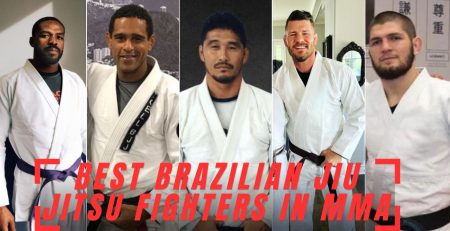
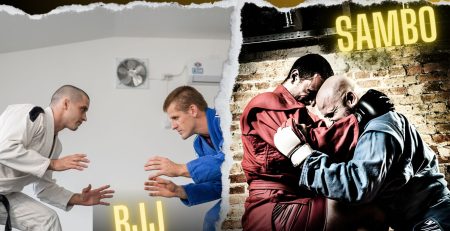


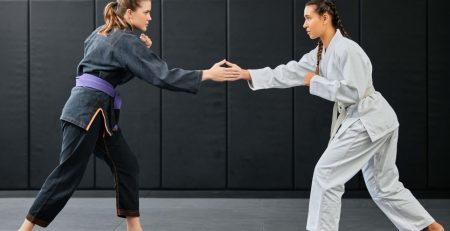
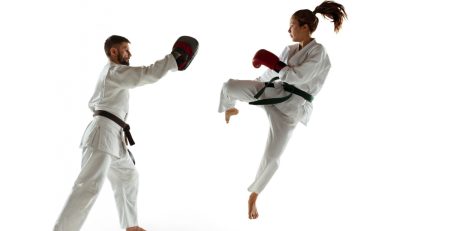
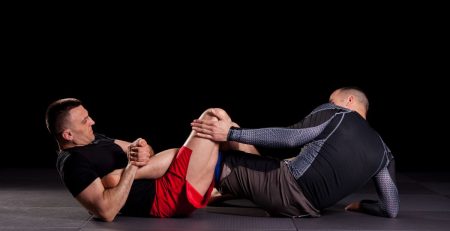
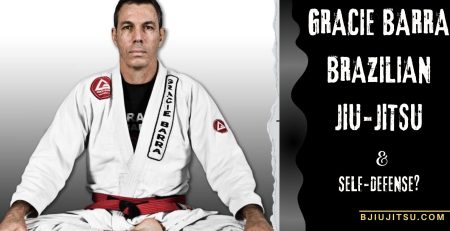
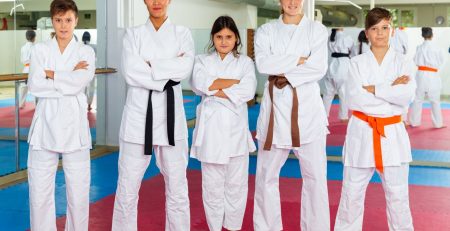


Leave a Reply
You must be logged in to post a comment.